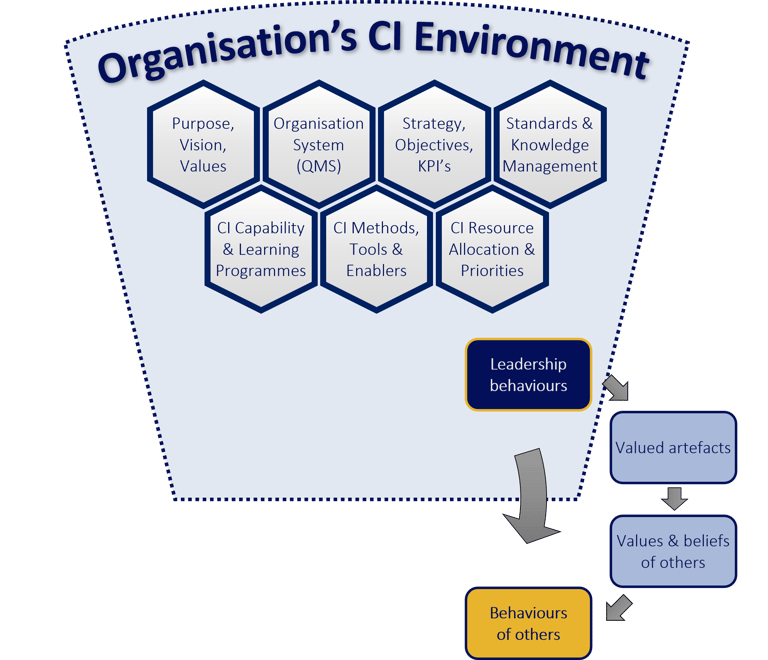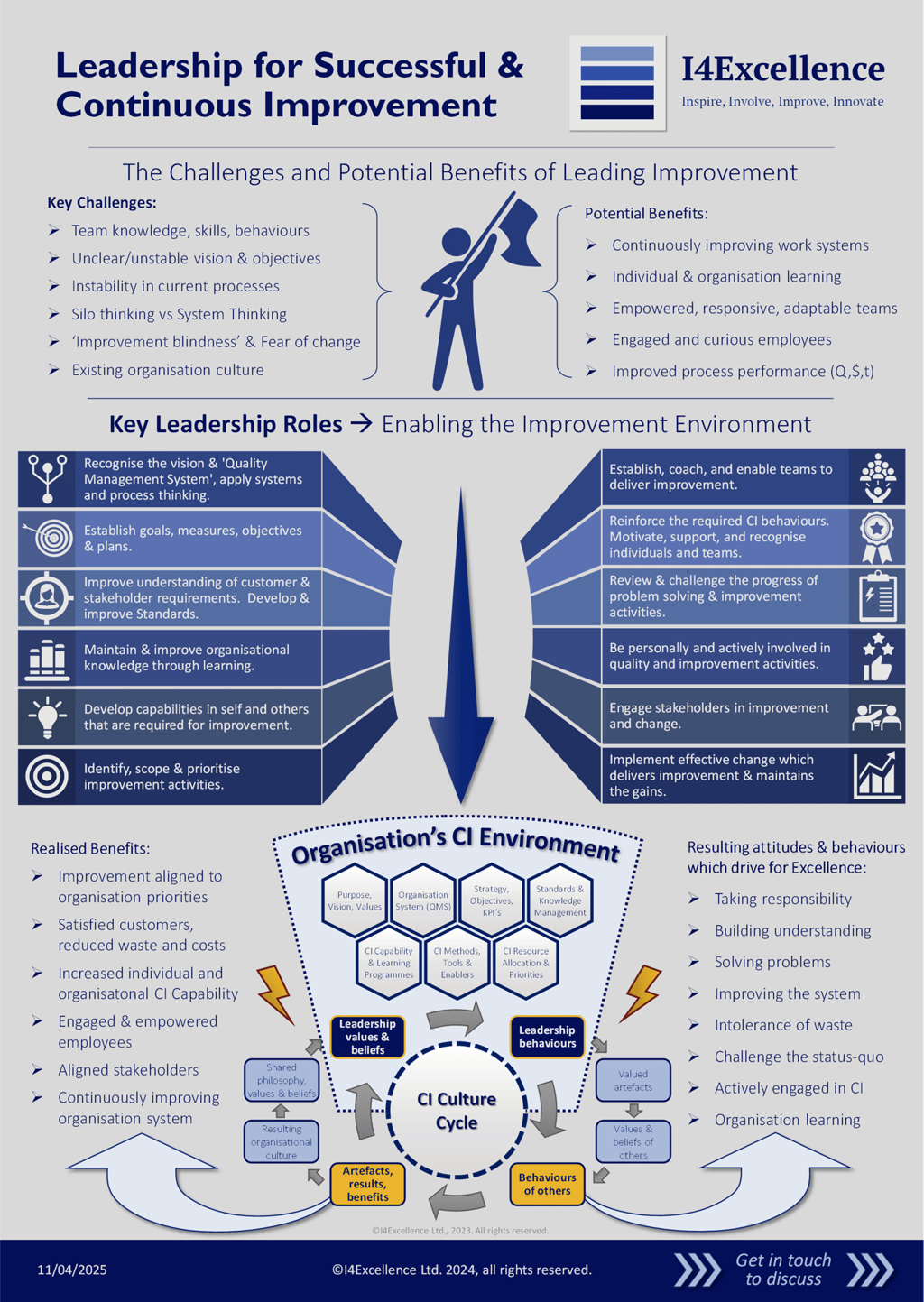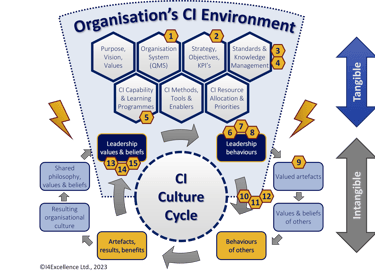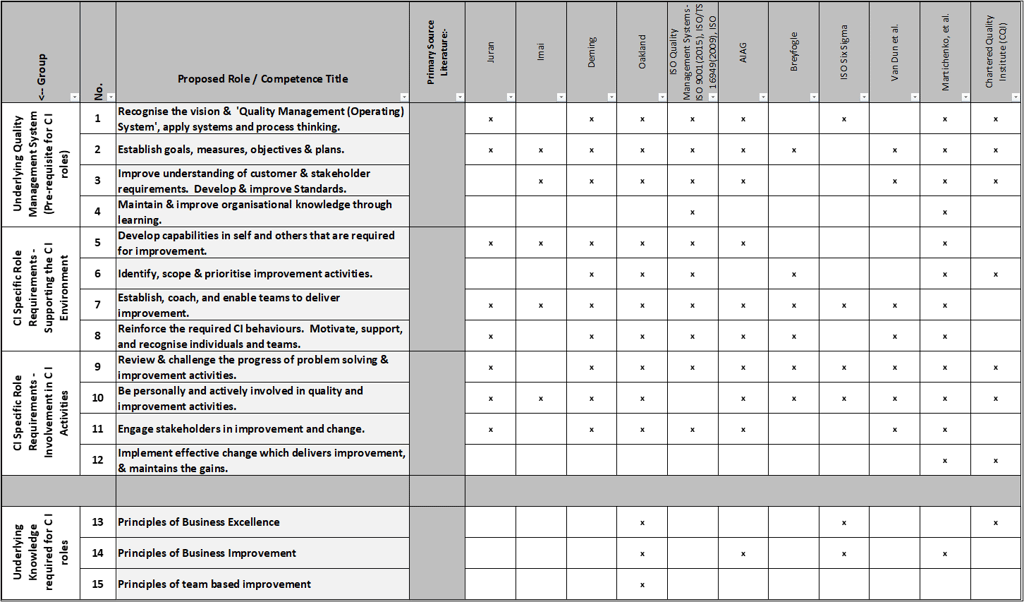Leaders in the Organisation's CI Environment
This article follows-on from the previous exploration of the 'CI Environment', and, based on research, explains the importance of Leader's roles in bringing CI alive in their organisation.
CI ENVIRONMENTORGANISATION IMPROVEMENTCONTINUOUS IMPROVEMENT ENVIRONMENTCONTINUOUS IMPROVEMENTIMPROVEMENT LEADERSHIP


In my article describing an organisation’s Continuous Improvement (CI) Environment, I described that Leaders in the CI Environment play a crucial role - both in managing tangible elements, and significantly impacting the intangible elements that drive CI and CI culture.
While working in a large organisation and successfully mobilising a community of CI practitioners and specialists through an engaging work-based learning programme [1], I came to the realisation that the capability of this community wasn’t being fully released for the benefit of the organisation. The potential benefits of CI were not being realised, and that situation felt like waste.
Numerous symptoms in the organisation environment had started to inform my main hypothesis such as...
Failure of some teams to invest in building their CI capability, then calling for help when a crisis emerged.
Lack of understanding of the most important improvement needs within a team
Failure to see improvement projects through to conclusion
Rapidly shifting priorities based on reaction rather than planning
Teams that couldn’t recognise that their part of the organisation system should be a system itself
Inability for some teams to understand their own process performance
‘Improvement Blindness’ – see my previous blog on this challenging condition!
My main hypothesis was; leaders of the affected teams did not fully understand Continuous Improvement themselves, or their part in bringing CI alive in the workplace, and this was limiting the overall impact of CI. This hypothesis led to my MSc research project with the University of Bradford which provided guidance and structure to explore the subject of CI leadership with academic rigour.
The project led me to extensive literature review, development of the ‘CI Environment’ meta-model [2], identification of the Leader’s roles in the CI Environment, and primary research to determine the impact of Leader’s practices on organisation CI capability.
The ‘CI Environment’ meta-model model helped to reason the leaders impact on CI culture by describing how the values and beliefs of an organisation’s leaders toward CI can influence their behaviours related to CI activities. For the ‘Practitioners’ of CI in the workplace, the combination of tangible elements and leadership behaviours they observe represents the CI Environment. These leadership behaviours, in turn, shape the wider values, beliefs, and therefore priorities and actions of their teams and other’s around the organisation’s CI Environment too. The initial stages of that cycle are show in the partial CI Environment model shown below:


Having reasoned the impact that leaders have, I needed to identify what leaders should be doing in the CI environment to enable successful and impactful CI and the wider organisation’s CI capability – potentially a strategic asset. For this work, I focussed on the many ‘mid-level’ leadership that has more direct influence on the CI Environment, rather than the few ‘Exec’ leaders in an organisation.
A wide literature review helped me to identify what prior authors had said on this subject. Back in 2016/17 it was interesting how little was contained in recent literature, and how much valuable insight was contained in the formative work of Deming, Juran, Imai and others. The research identified 12 primary themes for Leaders roles – these and the primary literature sources are shown in the table at the bottom of this article.
While my research identified in-depth definitions of the role requirements for these 12 primary Leader’s roles in the CI Environment, the poster below provides the kind of quick insight and visual explanation that the 21st century demands… it’s the easiest way to absorb the importance and impact of Leader’s roles in the CI environment:


Underlying knowledge of key principles that Leader’s need to understand were also identified by this work (Items 13-15 in the table of competences). Not so much what they need to do, but fundamental principles which should be embraced, and which should inform values and beliefs – Principles of ‘Organisation Excellence’, Continuous Improvement (CI), and team-based improvement.
Comparing the 12 roles to the CI Environment model was an interesting exercise that revealed how the roles overlay neatly onto the meta-model. This was reassuring to see, as the two models had been developed almost independently. The visual explanation of this is shown in the version of the meta-model shown below:


Evidence – while I could have stopped at the literature informed research, that’s not the way I’ve been trained as a data-driven Improvement Leader. I felt that evidence was required, and so this research was extended to study the extent to which these Leadership behaviours were observed in organisations, and their resulting CI capability. The published paper [2] describes the research approach, findings, and conclusions, and I’m happy to discuss this with you directly – I’ll briefly summarise those findings here; the research revealed a significant relationship between demonstrated CI Leadership roles/competences and the organisation’s CI capability.
So what? Here are the key conclusions from this work on Leader’s roles in the CI Environment:
Leaders play a different role to practitioners.
Leader’s CI Leadership roles are not widely understood.
Leaders have a significant impact on the CI culture of the organisation
Organisation’s developing CI capability need to train their Leaders in their role in order to fully release the potential of CI.
There are no ‘off the shelf’ training and development packages available for leaders – until now! Get in touch, we have the knowledge, resources, and can quickly develop a ‘Leadership for CI’ solution for your organisation.
Since my original research, more has been published on this subject, and ‘Organisation Excellence’ frameworks are also pointing to the fundamental importance of these Leader capabilities. I’d be interested to hear from anyone who can expand on the thinking captured in this article and the published paper.






